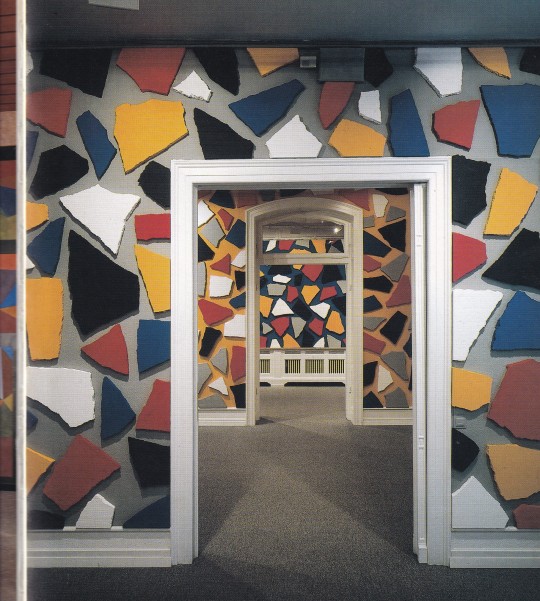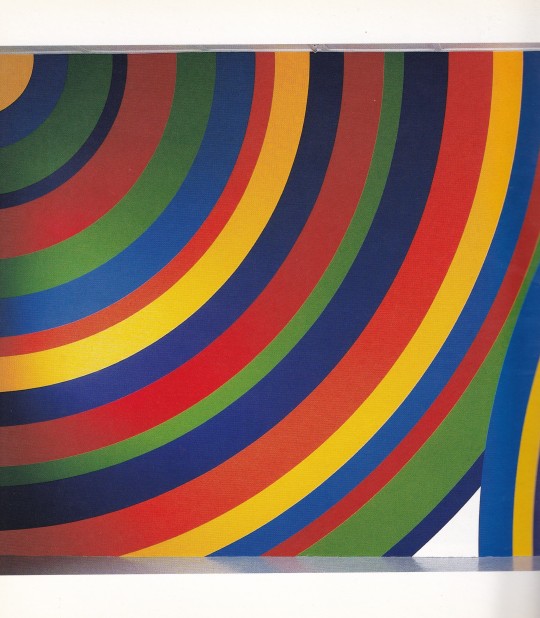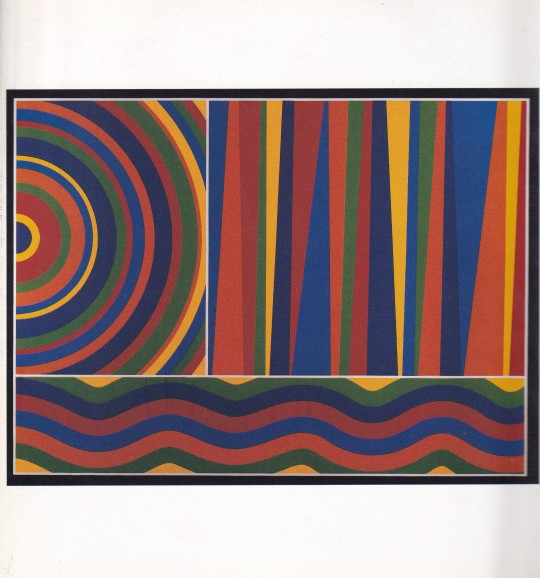#Renato Nicolini
Explore tagged Tumblr posts
Text
Ma Nicolini rivendicava anche una buona dose di realismo
Renato Nicolini è stato protagonista ed esecutore, regista e attore, di una profonda esigenza di rinnovamento dei modi di intendere, amministrare, produrre e vivere la cultura. Ha acceso nuovi bisogni dando una risposta a quelli emergenti […]. Nella fase del suo operato abbiamo visto modificarsi i ritmi e le immagini della nostra città, popolarsi la notte, mescolarsi i consumi, legittimarsi…

View On WordPress
#1963#1976#1982#architetto#assessore#cinema#cultura#effimero#estate#fumetti#Marco Gualtieri#PCI#Renato Nicolini#Roma#stagione#studenti
1 note
·
View note
Text
Ma Nicolini rivendicava anche una buona dose di realismo
Renato Nicolini è stato protagonista ed esecutore, regista e attore, di una profonda esigenza di rinnovamento dei modi di intendere, amministrare, produrre e vivere la cultura. Ha acceso nuovi bisogni dando una risposta a quelli emergenti […]. Nella fase del suo operato abbiamo visto modificarsi i ritmi e le immagini della nostra città, popolarsi la notte, mescolarsi i consumi, legittimarsi…

View On WordPress
#1963#1976#1982#architetto#assessore#cinema#cultura#effimero#estate#fumetti#Marco Gualtieri#PCI#Renato Nicolini#Roma#stagione#studenti
0 notes
Text
Ma Nicolini rivendicava anche una buona dose di realismo
Renato Nicolini è stato protagonista ed esecutore, regista e attore, di una profonda esigenza di rinnovamento dei modi di intendere, amministrare, produrre e vivere la cultura. Ha acceso nuovi bisogni dando una risposta a quelli emergenti […]. Nella fase del suo operato abbiamo visto modificarsi i ritmi e le immagini della nostra città, popolarsi la notte, mescolarsi i consumi, legittimarsi…

View On WordPress
#1963#1976#1982#architetto#assessore#cinema#cultura#effimero#estate#fumetti#Marco Gualtieri#PCI#Renato Nicolini#Roma#stagione#studenti
0 notes
Text
Ma Nicolini rivendicava anche una buona dose di realismo
Renato Nicolini è stato protagonista ed esecutore, regista e attore, di una profonda esigenza di rinnovamento dei modi di intendere, amministrare, produrre e vivere la cultura. Ha acceso nuovi bisogni dando una risposta a quelli emergenti […]. Nella fase del suo operato abbiamo visto modificarsi i ritmi e le immagini della nostra città, popolarsi la notte, mescolarsi i consumi, legittimarsi…

View On WordPress
#1963#1976#1982#architetto#assessore#cinema#cultura#effimero#estate#fumetti#Marco Gualtieri#PCI#Renato Nicolini#Roma#stagione#studenti
0 notes
Text
Ma Nicolini rivendicava anche una buona dose di realismo
Renato Nicolini è stato protagonista ed esecutore, regista e attore, di una profonda esigenza di rinnovamento dei modi di intendere, amministrare, produrre e vivere la cultura. Ha acceso nuovi bisogni dando una risposta a quelli emergenti […]. Nella fase del suo operato abbiamo visto modificarsi i ritmi e le immagini della nostra città, popolarsi la notte, mescolarsi i consumi, legittimarsi…

View On WordPress
#1963#1976#1982#architetto#assessore#cinema#cultura#effimero#estate#fumetti#Marco Gualtieri#PCI#Renato Nicolini#Roma#stagione#studenti
0 notes
Text
Per la prima volta nella storia di Roma la Dc passa all’opposizione
Nonostante il primato del partito comunista nella capitale, l’insediamento di Giulio Carlo Argan si realizza con difficoltà. La genesi del percorso va ricercata nell’anno precedente e, più precisamente, nell’iniziativa del presidente della federazione romana del Pci Luigi Petroselli. Egli sottoscrive con l’allora sindaco democristiano Clelio Darida il “Piano Istituzionale di Roma”, fondamentale…

View On WordPress
#1974#1975#Anita Pasquali#Campidoglio#Carla Capponi#Clelio Darida#comunista#DC#Federazione#Gian Carlo Sbragia#Giulio Carlo Argan#indipendente#Lazio#Luigi Petroselli#Marco Gualtieri#Mario Gozzini#PCI#PRI#PSDI#PSI#Raniero La Valle#Renato Nicolini#roma#segretario#sindaco#Ugo Vetere#Vaticano#Vittoria Calzolari
0 notes
Text
Per la prima volta nella storia di Roma la Dc passa all’opposizione
Nonostante il primato del partito comunista nella capitale, l’insediamento di Giulio Carlo Argan si realizza con difficoltà. La genesi del percorso va ricercata nell’anno precedente e, più precisamente, nell’iniziativa del presidente della federazione romana del Pci Luigi Petroselli. Egli sottoscrive con l’allora sindaco democristiano Clelio Darida il “Piano Istituzionale di Roma”, fondamentale…

View On WordPress
#1974#1975#Anita Pasquali#Campidoglio#Carla Capponi#Clelio Darida#comunista#DC#Federazione#Gian Carlo Sbragia#Giulio Carlo Argan#indipendente#Lazio#Luigi Petroselli#Marco Gualtieri#Mario Gozzini#PCI#PRI#PSDI#PSI#Raniero La Valle#Renato Nicolini#roma#segretario#sindaco#Ugo Vetere#Vaticano#Vittoria Calzolari
0 notes
Text
Per la prima volta nella storia di Roma la Dc passa all’opposizione
Nonostante il primato del partito comunista nella capitale, l’insediamento di Giulio Carlo Argan si realizza con difficoltà. La genesi del percorso va ricercata nell’anno precedente e, più precisamente, nell’iniziativa del presidente della federazione romana del Pci Luigi Petroselli. Egli sottoscrive con l’allora sindaco democristiano Clelio Darida il “Piano Istituzionale di Roma”, fondamentale…

View On WordPress
#1974#1975#Anita Pasquali#Campidoglio#Carla Capponi#Clelio Darida#comunista#DC#Federazione#Gian Carlo Sbragia#Giulio Carlo Argan#indipendente#Lazio#Luigi Petroselli#Marco Gualtieri#Mario Gozzini#PCI#PRI#PSDI#PSI#Raniero La Valle#Renato Nicolini#roma#segretario#sindaco#Ugo Vetere#Vaticano#Vittoria Calzolari
0 notes
Text










Sol Lewitt wall drawings
a cura di Maria Grazia Tolomeo, Valentina Bonomo
Palazzo delle Esposizioni
s8zero / project room
LitoSud, Roma 2020, 80 pagine, 21x24cm, ISBN 88-82210-238-6
euro 25,00
email if you want to buy [email protected]
S8ZERO project room Palazzo delle Esposizioni Roma 10 maggio - 30 agosto 200
La mostra inaugura lo spazio S8ZERO, collocato al piano delle fondamenta del Palazzo delle Esposizioni e articolato in due progetti: Project Room e Melting Pot. L’iniziativa, ideata e curata da Maria Grazia Tolomeo, conferisce all’istituzione pubblica il ruolo di committente di importanti opere d’arte contemporanee. Nello spazio denominato Project Room, infatti, gli artisti saranno chiamati a esporre progetti inediti, ideati in stretta relazione allo spazio espositivo. “Il Palazzo delle Esposizioni” scrive Renato Nicolini presidente dell’Azienda Speciale Palaexpo nel presentare la prima iniziativa di S8ZERO, “vorrebbe caratterizzarsi come un’istituzione che si rivolge soprattutto agli artisti ed al mondo dell’arte, un luogo dove riunirsi, discutere, immaginare, informarsi”. Una serie di iniziative, pertanto, riunite nel progetto Melting Pot, saranno dedicate a spettacoli teatrali, performance, rassegne in conformità con la varietà dei linguaggi di cui si è appropriata l’arte contemporanea. Il titolo S8ZERO, come dichiara Maria Grazia Tolomeo, si riferisce alla collocazione degli spazi all’interno dell’edificio e contemporaneamente alla temperatura “di un luogo in cui idee, sperimentazioni, eventi si manifesteranno per sciogliersi al contatto con il pubblico”. Il ciclo Project Room ha inizio con un lavoro di Sol LeWitt (Hurtford 1928), il noto artista americano che da più tempo e con più prestigio lavora sull’idea di opera d’arte strettamente relazionata allo spazio destinata ad accoglierla. Il maggiore esponente dell’arte concettuale, ha ideato appositamente per il Palazzo delle Esposizioni due nuovi wall drawing, trasformando con i suoi colori due grandi sale, le loro mura, le loro volte e attribuendo loro, con il rigore e la chiarezza del progetto, una rinnovata vitalità. La mostra è a di cura di Maria Grazia Tolomeo e di Valentina Bonomo.
17/04/24
#Sol Lewitt#art exhibition catalogue#S8ZERO Roma 2000#Maria Grazia Borromeo#art books#fashionbooksmilano+
2 notes
·
View notes
Text
youtube
A few days ago, we let you know about the arrival of FITNESS FOREVER’s new album with the first advance single, “A Vele Spiegate”, but there is something very important that you need to know. It all starts in Rome, in 2005. A fascinating and experienced TV presenter takes a walk down the Villa Borghese. A young woman accompanies him, hypnotized by his distracted way of walking, by the nervous gesticulations of his hands. In the next scene, they are sitting together romantically on a bench, and kiss passionately as if it were a seal of their cosmic love that transcends logic, time and space. In this sensual and secret Rome, a city open to all ideas and possibilities, we find the first portrait of chansonnier, a figure that will show up again and again in different ways and shapes over the course of “Amore e Salute”.
On this album, we will find the stories of some of those chansonnier. Beyond the original meaning of someone who sings his or her own songs, we understand this figure here to be a certain type of man, of a certain age, who is full of class, charm and elegance, intelligent and vocally persuasive, with a magnetic look, a mysterious and melancholic interior life, and that touch of a sense of humor that makes him absolutely irresistible to women of all ages and social classes. The kind of man that was common in the last century and is basically extinct now, like, Daniele Pace, Filipponio, Julio Iglesias, Franco Califano, Serge Gainsbourg, Renato Nicolini, Luciano De Crescenzo, Renzo Arbore, Luciano Angeleri and Fred Bongusto, to name a few.
Specifically, this advance single that we’re bringing you today, “Ischia”, tells the story of the latter, but to tell the story of Bongusto, we need to start with the incredible and exceptional collaborator that Carlos Valderrama and company worked with: Peppino Di Capri.There is no one in Italy who doesn’t know Peppino Di Capri, an authentic living legend with seven decades of music under his belt, reinventing himself constantly and always staying alive in everyone’s hearts, injecting his pop and Neopolitan vision into any language he comes across.
0 notes
Text

3 notes
·
View notes
Text
Per la prima volta nella storia di Roma la Dc passa all’opposizione
Nonostante il primato del partito comunista nella capitale, l’insediamento di Giulio Carlo Argan si realizza con difficoltà. La genesi del percorso va ricercata nell’anno precedente e, più precisamente, nell’iniziativa del presidente della federazione romana del Pci Luigi Petroselli. Egli sottoscrive con l’allora sindaco democristiano Clelio Darida il “Piano Istituzionale di Roma”, fondamentale…

View On WordPress
#1974#1975#Anita Pasquali#Campidoglio#Carla Capponi#Clelio Darida#comunista#DC#Federazione#Gian Carlo Sbragia#Giulio Carlo Argan#indipendente#Lazio#Luigi Petroselli#Marco Gualtieri#Mario Gozzini#PCI#PRI#PSDI#PSI#Raniero La Valle#Renato Nicolini#roma#segretario#sindaco#Ugo Vetere#Vaticano#Vittoria Calzolari
0 notes
Text
At the beginning of the semester, I became interested in the topic of remembering and forgetting; of history as sedimentation. I was interested in collective memory, of things we remember and those we forget and why, of memory politics. In the past, and its relation to the present through practices of remembering and forgetting. And the purposes these collective rememberings and forgettings serve.
The period from the end of the 1960's to the beginning of the 1980's in Italy is remembered as the "years of lead", a time when extreme-left terrorism had paralyzed the country in fear. There is a very successful damnatio memoriaa regarding what was in fact a real intellectual and political revolution in those years. The operaist movement, then Autonomia... I do not have the knowledge or the time to elaborate here, but it was, in fact, the last communist revolution in Europe. It lasted for more than a decade -- the longest decade of the shortest century, the 70's.
This was a time of flourishing also in the field of architecture in Italy. Mario Tronti, Cacciari, Manfredo Tafuri and others had inspired the work of Aldo Rossi, Archizoom, Superstudio and others -- whose work has been later branded as "radical architecture", just another sellable label. What they had was a critique of a capitalism in the middle of a big transformation in the form of visions for the city. They envisioned a city which made visible the contradictions and problematics of their time, the darkness of the present (Agamben), in order to propose a subversive possibility.
These movements are lost futures (Fisher), or "future[s] at our backs" (Arendt), possible futures which never happened, and which are still hunting us.
Then came the counterrevolution (Virno). A complex political, ideological, military program to counteract the movements in Italy.
"Meanwhile, in the labyrinths of the big cities, silence, loneliness and helplessness reigned. The same meaningless words poured from the mouths of serial politicians on television screens. The eighties had begun.
The years of cynicism, opportunism and fear.
And we have not even mentioned what has happened since then."
Today, in my fourth year of architectural studies, I have the impression that such visions are no longer possible. Our horizons are blocked by a capitalist realism (Fisher) which is almost impossible to resist. We cannot imagine a city beyond capitalism anymore. Everything has been done. We don't see our shuckles anymore, they are disguised as life itself.
Even the ephemerous urbanism of Renato Nicolini's Estate romana seems so distant -- a time when one could still touch monuments and have film screenings in the ancient roman ruins. It seems like a distant dream.
I would like to argue that this melancholia, this mourning of our lost futures is not useless. To paraphrase Zizek (paraphrasing Marx), architects have spent so much time trying to change the city, maybe it's time to understand it.
I propose a vision of the Domus Aurea, a place that has been so many things before -- a royal palace, a dark cave, a place for artists to study frescoes, yet another unaccessible Italian ruin, an asset in the economy of tourism -- liberated from the restrains of the logic of profit and the orthodox conservation policies deriving from it. I propose to see the Domus Aurea as public space, a place for debate and conflict, a place to meet and to organize public life. A place seving public culture instead of private gain.
1 note
·
View note
Text
I DISEGNATORI DI FUMETTI RACCONTANO ROMA
I DISEGNATORI DI FUMETTI RACCONTANO ROMA
Chi è un po’ avanti con l’età forse ricorderà l’iniziativa chiamata l’estate romana. Nella metà degli anni settanta, il noto critico d’arte Giulio Carlo Agan, sindaco della prima giunta di sinistra Roma, si pose l’obiettivo di bonificare un corpo urbano allora dilaniato da uno sfilacciamento sociale tra centro e periferie che ne faceva una capitale arretrata. Il sindaco nominò il 35enne…

View On WordPress
2 notes
·
View notes
Text
Per la prima volta nella storia di Roma la Dc passa all’opposizione
Nonostante il primato del partito comunista nella capitale, l’insediamento di Giulio Carlo Argan si realizza con difficoltà. La genesi del percorso va ricercata nell’anno precedente e, più precisamente, nell’iniziativa del presidente della federazione romana del Pci Luigi Petroselli. Egli sottoscrive con l’allora sindaco democristiano Clelio Darida il “Piano Istituzionale di Roma”, fondamentale…

View On WordPress
#1974#1975#Anita Pasquali#Campidoglio#Carla Capponi#Clelio Darida#comunista#DC#Federazione#Gian Carlo Sbragia#Giulio Carlo Argan#indipendente#Lazio#Luigi Petroselli#Marco Gualtieri#Mario Gozzini#PCI#PRI#PSDI#PSI#Raniero La Valle#Renato Nicolini#roma#segretario#sindaco#Ugo Vetere#Vaticano#Vittoria Calzolari
0 notes
